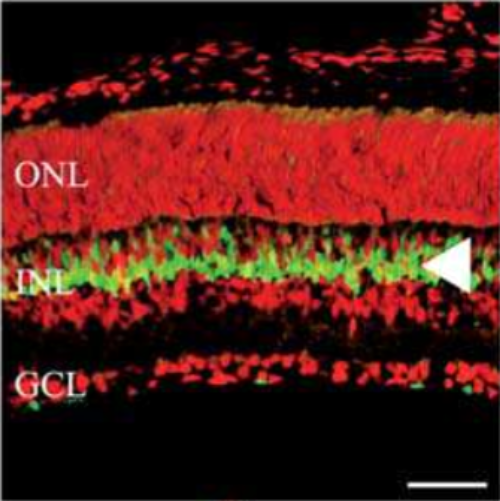Prospective purification and characterization of Müller glia in the mouse retina regeneration assay.
Reactive gliosis is an umbrella term for various glia functions in neurodegenerative diseases and upon injury. Specifically, Müller glia (MG) in some species readily regenerate retinal neurons to restore vision loss after insult, whereas mammalian MG respond by reactive gliosis-a heterogeneous response which frequently includes cell hypertrophy and proliferation. Limited regeneration has been stimulated in mammals, with a higher propensity in young MG, and in vitro compared to in vivo, but the underlying processes are unknown. To facilitate studies on the mechanisms regulating and limiting glia functions, we developed a strategy to purify glia and their progeny by fluorescence-activated cell sorting. Dual-transgenic nuclear reporter mice, which label neurons and glia with red and green fluorescent proteins, respectively, have enabled MG enrichment up to 93% purity. We applied this approach to MG in a mouse retina regeneration ex vivo assay. Combined cell size and cell cycle analysis indicates that most MG hypertrophy and a subpopulation proliferates which, over time, become even larger in cell size than the ones that do not proliferate. MG undergo timed differential genomic changes in genes controlling stemness and neurogenic competence; and glial markers are downregulated. Genes that are potentially required for, or associated with, regeneration and reactive gliosis are differentially regulated by retina explant culture time, epidermal growth factor stimulation, and animal age. Thus, MG enrichment facilitates cellular and molecular studies which, in combination with the mouse retina regeneration assay, provide an experimental approach for deciphering mechanisms that possibly regulate reactive gliosis and limit regeneration in mammals.
Back to list
